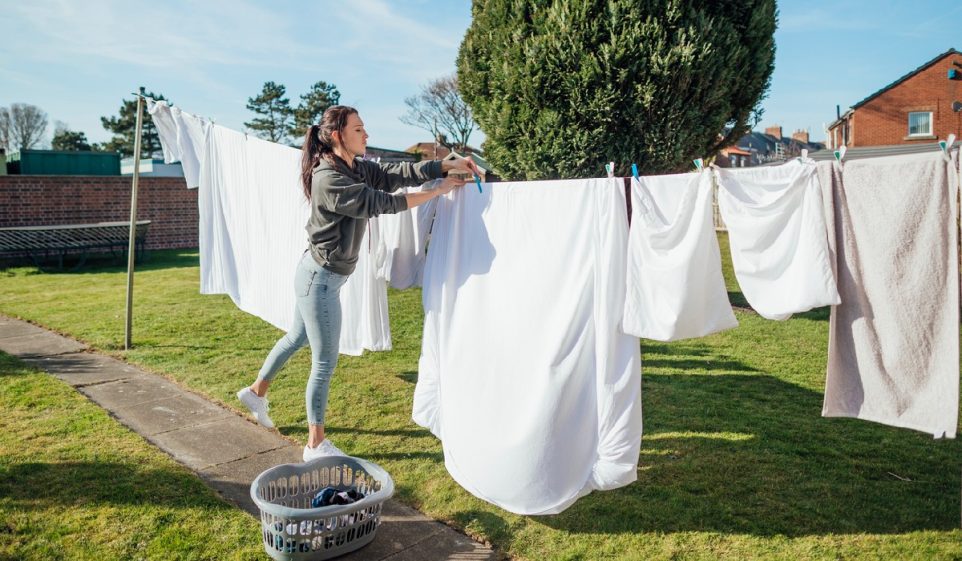Accidents Happen: 4 Tips to Get Blood (and Other Stains) Out of Your Sheets

Accidents happen, and that’s no more true than when it comes to you and your family’s bed sheets. Whether it’s from a nosebleed, menstrual blood, spilled food, or even muddy paws, it can be pretty disheartening to see a huge stain on your crisp, clean sheets. But fear not, because we’re here to help you get your favorite sheets back in tip-top shape.
In this article, we’ll discuss five easy tips and tricks to follow so you can get those stubborn sheet stains out for good. So if you’re ready to do a little scrubbing, keep reading to learn more!
Preparing for Stain Removal
Properly Identifying the Type of Stain
The first step in removing a stain is to identify what type of stain it is. Different types of stains will require different removal techniques.
Gather Materials Needed for Removal
Once you have identified what kind of stain you are dealing with, you can gather the materials needed for removal. Common materials used in cleaning include laundry stain spray or treatment, salt, sugar, baking soda, hydrogen peroxide, ammonia, white vinegar, rubbing alcohol, lemon juice, and dishwashing liquid. Be sure to check the type of sheets you are working with as different thread counts require specific cleaning solutions. For example, standard cotton sheets will require a different ratio of ingredients as opposed to Egyptian cotton sheets.
Tips for Removing Blood Stains
1. Cold Water
One of the simplest and most effective ways to remove a blood stain from your bedding set is to rinse them with cold water. As soon as you notice the stain, run to the nearest sink and rinse your bedding under cold water and rub gently with your hands to help loosen the stain. If the stain persists, proceed to treat the stain with a stain remover.
2. Oxygen-based Bleaches
You can use oxygen-based bleaches to treat stubborn blood stains as they contain chemicals that act as an oxidizing agent, breaking down proteins in the stain and making it easier to remove. Be sure to use non-chlorine bleaches according to their directions. Avoid using chlorine bleach as it can cause discoloration in fabrics. You may also want to skip out on the bleach if your sheets aren’t white.
3. Abrasives
If oxygen-based bleaches aren’t right for your stain, try using an abrasive cleaner, such as baking soda or salt. Mix some baking soda with water and apply it directly to the stain before rinsing with cold water. Alternatively, sprinkle some salt onto the stained area before scrubbing gently with a soft cloth or brush.
4. Enzyme Treatments
Enzyme treatments are another option for removing tough blood stains as they break down proteins in the stain and lift them away from the fabric fibers. Apply an enzyme treatment or pre-soak solution according to package directions and let sit for at least 30 minutes before laundering as usual.
Tips for Removing Other Kinds of Stains
Removing Grease Stains
Grease stains on bed sheets can be difficult to remove without damaging the fabric, but there are several methods that may work depending on what kind of grease is on the sheets. Try using baby powder, cornstarch, or talcum powder first before washing and drying as usual. For oil-based grease stains, mix a solution of ½ cup of dishwashing liquid and two cups of warm water and soak for at least 30 minutes before laundering again in cold water according to care instructions.
Removing Food Stains
When dealing with food stains on bed sheets, blot as much of the liquid as possible before treating any remaining residue with a mild stain remover or liquid detergent mixed with a few teaspoons of white vinegar or lemon juice. For tougher food stains (like tomato sauce) you may need to pretreat with a laundry pre-soak or spot treatment product or use an enzyme treatment before laundering as usual.
Removing Beverage Stains
Beverages like wine, coffee, and tea can leave stubborn dark stains on bed sheets that can be difficult to get out without damaging the fabric fibers. To start, treat any remaining residue with a mild detergent mixed with white vinegar or lemon juice followed by rinsing thoroughly with cold water before laundering according to care instructions. If this doesn’t do the trick, try using that handy enzyme treatment and launder again in cold water according to care instructions.
Removing Dirt Stains
Dirt and mud stains on bed sheets can be more difficult to remove than other types of stains simply because they involve dirt particles embedded into the fabric fibers. To start, use a vacuum cleaner attachment to suck up any visible dirt particles before trying a spot cleaner specifically designed for the removal of dirt and soil. Follow up by laundering in cold water according to care instructions. Alternatively, you could mix your own spot cleaner again using that formula of equal parts baking soda and white vinegar.
Conclusion
Stains on bed sheets can be a challenging task, but with the right methods and some patience, you can get them out and keep your sheets looking like new. These five methods for removing blood and other stains from bed sheets can help you remove and prevent marks on your bedding for good. Whether you’re using cold water, oxygen-based bleach, or a spot treatment, you should be able to find something that works for you.
Why Trust Us?
At The Sleeping Institute, we're dedicated to transparency, impartiality, and accuracy in every article we publish. Our reviews are based on comprehensive analysis and firsthand experience. Staying current with the latest advancements in sleep technology, we offer up-to-date, reliable, and unbiased information to help you make informed decisions for a better night's rest. Let us be your trusted guide in the ever-evolving world of sleep technology!